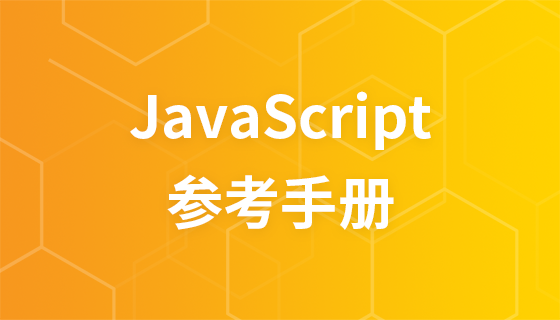当想写if...else语句时,使用三元操作符来代替。
<span style="font-size: 16px;">const x = 20;<br/>let answer;<br/>if (x > 10) {<br/> answer = 'is greater';<br/>} else {<br/> answer = 'is lesser';<br/>}<br/></span>简写:<span style="font-size: 16px;">const answer = x > 10 ? 'is greater' : 'is lesser';</span>
也可以嵌套if语句:<span style="font-size: 16px;">const big = x > 10 ? " greater 10" : x</span>
当给一个变量分配另一个值时,想确定源始值不是null,undefined或空值。可以写撰写一个多重条件的if语句。
<span style="font-size: 16px;">if (variable1 !== null || variable1 !== undefined || variable1 !== '') {<br/> let variable2 = variable1;<br/>}<br/></span>或者可以使用短路求值方法:<span style="font-size: 16px;">const variable2 = variable1 || 'new';</span>
立即学习“Java免费学习笔记(深入)”;
<span style="font-size: 16px;">let x;<br/>let y;<br/>let z = 3;<br/></span>
简写方法:<span style="font-size: 16px;">let x, y, z=3;</span>
<span style="font-size: 16px;">if (likeJavaScript === true)</span>
简写:<span style="font-size: 16px;">if (likeJavaScript)</span>
只有likeJavaScript是真值时,二者语句才相等
如果判断值不是真值,则可以这样:
<span style="font-size: 16px;">let a;<br/>if ( a !== true ) {<br/>// do something...<br/>}<br/></span>简写:
<span style="font-size: 16px;">let a;<br/>if ( !a ) {<br/>// do something...<br/>}<br/></span><span style="font-size: 16px;">for (let i = 0; i < allImgs.length; i++)</span>
简写:<span style="font-size: 16px;">for (let index in allImgs)</span>
也可以使用Array.forEach:
<span style="font-size: 16px;">function logArrayElements(element, index, array) {<br/> console.log("a[" + index + "] = " + element);<br/>}<br/>[2, 5, 9].forEach(logArrayElements);<br/>// logs:<br/>// a[0] = 2<br/>// a[1] = 5<br/>// a[2] = 9<br/></span>给一个变量分配的值是通过判断其值是否为null或undefined,则可以:
<span style="font-size: 16px;">let dbHost;<br/>if (process.env.DB_HOST) {<br/> dbHost = process.env.DB_HOST;<br/>} else {<br/> dbHost = 'localhost';<br/>}<br/></span>简写:<span style="font-size: 16px;">const dbHost = process.env.DB_HOST || 'localhost';</span>
当需要写数字带有很多零时(如10000000),可以采用指数(1e7)来代替这个数字:<span style="font-size: 16px;">for (let i = 0; i < 10000; i++) {}</span>
简写:
<span style="font-size: 16px;">for (let i = 0; i < 1e7; i++) {}<br/><br/>// 下面都是返回true<br/>1e0 === 1;<br/>1e1 === 10;<br/>1e2 === 100;<br/>1e3 === 1000;<br/>1e4 === 10000;<br/>1e5 === 100000;<br/></span>如果属性名与key名相同,则可以采用ES6的方法:<span style="font-size: 16px;">const obj = { x:x, y:y };</span>
简写:<span style="font-size: 16px;">const obj = { x, y };</span>
传统函数编写方法很容易让人理解和编写,但是当嵌套在另一个函数中,则这些优势就荡然无存。
<span style="font-size: 16px;">function sayHello(name) {<br/> console.log('Hello', name);<br/>}<br/><br/>setTimeout(function() {<br/> console.log('Loaded')<br/>}, 2000);<br/><br/>list.forEach(function(item) {<br/> console.log(item);<br/>});<br/></span>简写:
<span style="font-size: 16px;">sayHello = name => console.log('Hello', name);<br/><br/>setTimeout(() => console.log('Loaded'), 2000);<br/><br/>list.forEach(item => console.log(item));<br/></span>经常使用return语句来返回函数最终结果,一个单独语句的箭头函数能隐式返回其值(函数必须省略{}为了省略return关键字)
为返回多行语句(例如对象字面表达式),则需要使用()包围函数体。
<span style="font-size: 16px;">function calcCircumference(diameter) {<br/> return Math.PI * diameter<br/>}<br/><br/>var func = function func() {<br/> return { foo: 1 };<br/>};<br/></span>简写:
<span style="font-size: 16px;">calcCircumference = diameter => (<br/> Math.PI * diameter;<br/>)<br/><br/>var func = () => ({ foo: 1 });<br/></span>为了给函数中参数传递默认值,通常使用if语句来编写,但是使用ES6定义默认值,则会很简洁:
<span style="font-size: 16px;">function volume(l, w, h) {<br/> if (w === undefined)<br/> w = 3;<br/> if (h === undefined)<br/> h = 4;<br/> return l * w * h;<br/>}<br/></span>简写:
<span style="font-size: 16px;">volume = (l, w = 3, h = 4 ) => (l * w * h);<br/><br/>volume(2) //output: 24<br/></span>
传统的JavaScript语言,输出模板通常是这样写的。
<span style="font-size: 16px;">const welcome = 'You have logged in as ' + first + ' ' + last + '.'<br/><br/>const db = 'http://' + host + ':' + port + '/' + database;<br/></span>
ES6可以使用反引号和${}简写:
<span style="font-size: 16px;">const welcome = `You have logged in as ${first} ${last}`;<br/><br/>const db = `http://${host}:${port}/${database}`;<br/></span>在web框架中,经常需要从组件和API之间来回传递数组或对象字面形式的数据,然后需要解构它
<span style="font-size: 16px;">const observable = require('mobx/observable');<br/>const action = require('mobx/action');<br/>const runInAction = require('mobx/runInAction');<br/><br/>const store = this.props.store;<br/>const form = this.props.form;<br/>const loading = this.props.loading;<br/>const errors = this.props.errors;<br/>const entity = this.props.entity;<br/></span>简写:
<span style="font-size: 16px;">import { observable, action, runInAction } from 'mobx';<br/><br/>const { store, form, loading, errors, entity } = this.props;<br/></span>也可以分配变量名:
<span style="font-size: 16px;">const { store, form, loading, errors, entity:contact } = this.props;<br/>//最后一个变量名为contact<br/></span>需要输出多行字符串,需要使用+来拼接:
<span style="font-size: 16px;">const lorem = 'Lorem ipsum dolor sit amet, consectetur\n\t'<br/> + 'adipisicing elit, sed do eiusmod tempor incididunt\n\t'<br/> + 'ut labore et dolore magna aliqua. Ut enim ad minim\n\t'<br/> + 'veniam, quis nostrud exercitation ullamco laboris\n\t'<br/> + 'nisi ut aliquip ex ea commodo consequat. Duis aute\n\t'<br/> + 'irure dolor in reprehenderit in voluptate velit esse.\n\t'<br/></span>
使用反引号,则可以达到简写作用:
<span style="font-size: 16px;">const lorem = `Lorem ipsum dolor sit amet, consectetur<br/> adipisicing elit, sed do eiusmod tempor incididunt<br/> ut labore et dolore magna aliqua. Ut enim ad minim<br/> veniam, quis nostrud exercitation ullamco laboris<br/> nisi ut aliquip ex ea commodo consequat. Duis aute<br/> irure dolor in reprehenderit in voluptate velit esse.`<br/></span>
扩展运算符有几种用例让JavaScript代码更加有效使用,可以用来代替某个数组函数。
<span style="font-size: 16px;">// joining arrays<br/>const odd = [1, 3, 5];<br/>const nums = [2 ,4 , 6].concat(odd);<br/><br/>// cloning arrays<br/>const arr = [1, 2, 3, 4];<br/>const arr2 = arr.slice()<br/></span>
简写:
<span style="font-size: 16px;">// joining arrays<br/>const odd = [1, 3, 5 ];<br/>const nums = [2 ,4 , 6, ...odd];<br/>console.log(nums); // [ 2, 4, 6, 1, 3, 5 ]<br/><br/>// cloning arrays<br/>const arr = [1, 2, 3, 4];<br/>const arr2 = [...arr];<br/></span>
不像concat()函数,可以使用扩展运算符来在一个数组中任意处插入另一个数组。
<span style="font-size: 16px;">const odd = [1, 3, 5 ];<br/>const nums = [2, ...odd, 4 , 6];<br/></span>
也可以使用扩展运算符解构:
<span style="font-size: 16px;">const { a, b, ...z } = { a: 1, b: 2, c: 3, d: 4 };<br/>console.log(a) // 1<br/>console.log(b) // 2<br/>console.log(z) // { c: 3, d: 4 }<br/></span>JavaScript中如果没有向函数参数传递值,则参数为undefined。为了增强参数赋值,可以使用if语句来抛出异常,或使用强制参数简写方法。
<span style="font-size: 16px;">function foo(bar) {<br/> if(bar === undefined) {<br/> throw new Error('Missing parameter!');<br/> }<br/> return bar;<br/>}<br/></span>简写:
<span style="font-size: 16px;">mandatory = () => {<br/> throw new Error('Missing parameter!');<br/>}<br/><br/>foo = (bar = mandatory()) => {<br/> return bar;<br/>}<br/></span>想从数组中查找某个值,则需要循环。在ES6中,find()函数能实现同样效果。
<span style="font-size: 16px;">const pets = [<br/> { type: 'Dog', name: 'Max'},<br/> { type: 'Cat', name: 'Karl'},<br/> { type: 'Dog', name: 'Tommy'},<br/>]<br/><br/>function findDog(name) {<br/> for(let i = 0; i<pets.length; ++i) {<br/> if(pets[i].type === 'Dog' && pets[i].name === name) {<br/> return pets[i];<br/> }<br/> }<br/>}<br/></span>简写:
<span style="font-size: 16px;">pet = pets.find(pet => pet.type ==='Dog' && pet.name === 'Tommy');<br/>console.log(pet); // { type: 'Dog', name: 'Tommy' }<br/></span>考虑一个验证函数
<span style="font-size: 16px;">function validate(values) {<br/> if(!values.first)<br/> return false;<br/> if(!values.last)<br/> return false;<br/> return true;<br/>}<br/><br/>console.log(validate({first:'Bruce',last:'Wayne'})); // true<br/></span>假设当需要不同域和规则来验证,能否编写一个通用函数在运行时确认?
<span style="font-size: 16px;">// 对象验证规则<br/>const schema = {<br/> first: {<br/> required:true<br/> },<br/> last: {<br/> required:true<br/> }<br/>}<br/><br/>// 通用验证函数<br/>const validate = (schema, values) => {<br/> for(field in schema) {<br/> if(schema[field].required) {<br/> if(!values[field]) {<br/> return false;<br/> }<br/> }<br/> }<br/> return true;<br/>}<br/><br/><br/>console.log(validate(schema, {first:'Bruce'})); // false<br/>console.log(validate(schema, {first:'Bruce',last:'Wayne'})); // true<br/></span>现在可以有适用于各种情况的验证函数,不需要为了每个而编写自定义验证函数了
有一个有效用例用于双重非运算操作符。可以用来代替Math.floor(),其优势在于运行更快,可以阅读此文章了解更多位运算。<span style="font-size: 16px;">Math.floor(4.9) === 4 //true</span>
简写:<span style="font-size: 16px;">~~4.9 === 4 //true</span>
相关推荐:
以上就是19 个 JavaScript 有用的简写技术分享的详细内容,更多请关注php中文网其它相关文章!

java怎么学习?java怎么入门?java在哪学?java怎么学才快?不用担心,这里为大家提供了java速学教程(入门到精通),有需要的小伙伴保存下载就能学习啦!




Copyright 2014-2025 https://www.php.cn/ All Rights Reserved | php.cn | 湘ICP备2023035733号